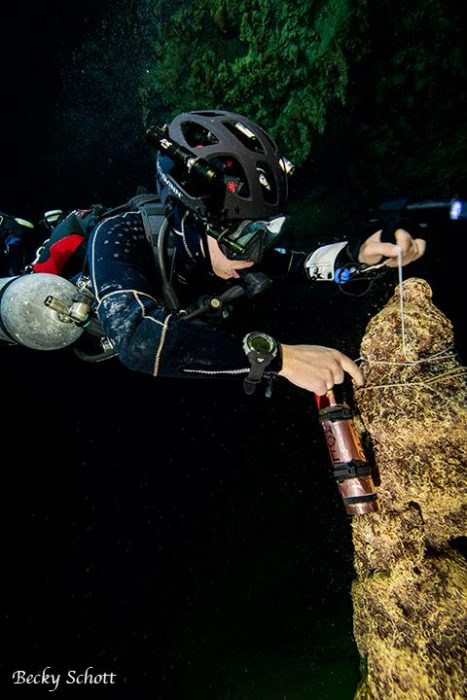PME’s miniDOT logger is a compact, completely submersible device used to monitor dissolved oxygen and temperature. Fully functional in fresh- or saltwater environments, the miniDOT measures dissolved oxygen through a fluorescence method. Data are recorded to an internal SD card. Operational details such as setting the time and sample interval can be accomplished through the USB cable.

Oxygen Supersaturation Protects Coastal Fauna from Ocean Warming
November 5, 2019
Water Column Investigation at Kauai Sea Farm
June 19, 2020Studying the Environmental Parameters and Fauna of Underwater Caves
Project Details
- PRODUCT(S): miniDOT® Logger
- APPLICATION: Coastal / Ocean
- PARAMETER: Dissolved Oxygen, Temperature
- LOCATION: Marine Caves in Belize
- ORGANIZATION: Texas A&M University at Galveston
- RECOGNITION: Fernando Calderon Gutierrez

Case Study Description
Fauna inhabiting underwater caves are among the least studied and least known of all marine species. A research team from Texas A&M University at Galveston is trying to change that, studying the environmental parameters of underwater caves in Belize and analyzing how those parameters influence the distribution of native fauna. The research team, led by Fernando Calderon Gutierrez, is monitoring dissolved oxygen, temperature, water pressure, and salinity levels at different sites inside two marine caves. The aim of the project is to determine how stable the environmental parameters are and to link those parameters to the distribution of cave fauna.
Unique Ecosystems, Home to Undiscovered Species
Underwater caves are common in the Bahamas, Belize, and along Mexico’s Yucatan Peninsula. They typically have a tidally influenced incurrent and excurrent but little or no terrestrial influence. This relative isolation creates unique ecosystems and endemism among the fauna species present. Belize, where Calderon and his team are working, is the site of the discovery of a new underwater cave species. Xibalbanus cokei (Yager, 2013), a remipede, was discovered near Caye Chapel, Belize. A new genus of calanoid copepod was also discovered in Belize at Giant Cave, Caye Caulkner. Both species are endemic to a single cave. Researchers expect to continue to discover new species in the caves of Belize and the Mexican Yucatan due to the uniqueness of the ecosystems, the amount of endemism present, and because the caves have, until recently, been under-studied.
A Challenging Environment
The difficulty of reaching these caves to study and to deploy monitoring devices has kept them out of the reach of many research teams. Many caves require a deep and difficult dive into narrow, unmapped spaces. Divers need a substantial amount of skill along with specialized training and experience. Similarly, their equipment and the monitoring devices they deploy need to be rugged, compact, durable, and maintenance free. Returning to repair, replace, or re-calibrate an instrument would be difficult at best.
Calderon and his team chose the miniDOT logger from Precision Measurement Engineering as an important part of their monitoring equipment. The miniDOT monitors dissolved oxygen and temperature and meets the team’s needs for a durable, compact device, easily deployed and capable of working for long periods. “The miniDOT loggers have been perfect for this project,” Calderon said, citing the above attributes, along with the quality of the data provided by miniDOTs.
He plans to deploy them again in the near future, in the same caves, to compare data between seasons. He also plans to use miniDOTs in other locations along the Yucatan Peninsula. His research there will focus on underwater caves which have a strong vertical stratification, going from fresh to marine water.
Conclusion
The ecological and environmental data from this research is still being analyzed. It will be written up in scientific journals and presented at conferences when the analysis is complete. Calderon expects dissolved oxygen to have a strong correlation with the distribution of fauna. He has been surprised to see endemic species inhabiting an area with less than 1mg/l of oxygen.

